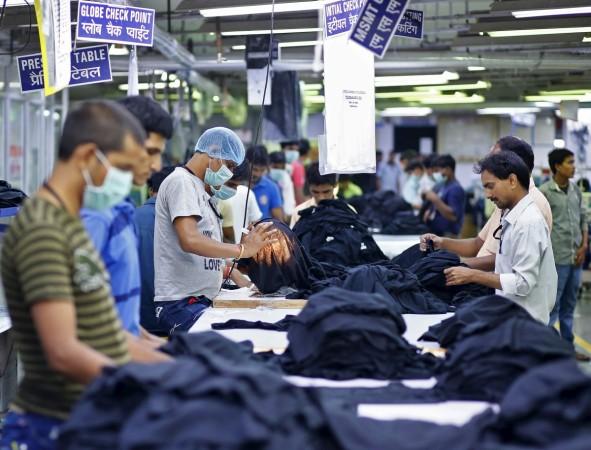
India's factory output post-demonetisation rose by 2.7 percent in January, official data showed on Friday.
The factory output, as per the Index of Industrial Production (IIP), had inched lower by 0.10 percent during December 2016 and contracted by 1.6 percent in January of 2016.
As per the IIP data released by the Central Statistics Office (CSO), the expansion was mainly on account of a 2.3 percent increase in manufacturing output, which has the maximum weight in the overall index.
The output of other two major sub-indices — mining and electricity — expanded during the first month of 2017.
The mining output was up by 5.3 percent, while that for electricity generation increased by 3.9 percent.
The cumulative growth of the country's factory output has inched up by 0.6 percent in the 10 months of the current fiscal.
Besides, the data revealed that among the six use-based classifications of the index, the output of consumer goods segment contracted by 1 percent in January.
The consumer non-durables segment's output decreased by 3.2 per cent, whereas the consumer durables segment edged higher by 2.9 percent. The intermediate goods' output inched down by 2.3 per cent.
However, the capital goods segment, which is a key indicator of economic activity, was higher by 10.7 percent. The basic goods' output rose by 5.3 percent.
Overall, only nine of the 22 industry groups in the manufacturing sector showed positive growth during the month under review.
Segment-wise, high negative growth was reported in the ship-building and repairs (-31.9 percent), sugar (-28.2 percent), PVC pipes and tubes (-27 percent), molasses (-26 percent), leather garments (-24.3 per cent) and three-wheelers (including passenger and goods carriers) (-24.3 percent).
Growth was witnessed in cable, rubber insulated (282.8 per cent), fruit pulp (121.5 percent), vitamins (46.9 percent), telephone instruments, including mobile phones and accessories (31.7 per cent), plates (27.2 percent) and antibiotics and it's preparations (25.9 percent).
Commenting on the data, Ficci's President Pankaj Patel said: "The manufacturing growth, though positive in January, remains fragile and a cause for concern. The sector may see a revival in the coming months as a result of measures taken in budget and other areas."
"What is important is that the reform momentum is continued which is important to boost investor confidence and stimulate investments."
Another business chamber, Assocham said that measures such as implementation of budget announcements and implementation of GST (Goods and Services Tax) as well as further reduction in bank lending rates hold the key for growth in India.
"Measures such as implementation of budget announcements, further reduction in bank lending rates, implementation of GST, policy reforms in infrastructure and core sectors... hold the key for growth in India," Sandeep Jajodia, Assocham president, said.

















